

 "The Great Wave Off Kanagawa"
"The Great Wave Off Kanagawa"
Japan's highest mountain, seen in
the hollow of the "Great Wave Off Kanagawa"
by
the woodblock artist Hokusai Katsushika is the most famous in his series,
Thirty-six Views of Mt. Fuji," a collection of woodblock prints depicting
"Fuji san" in its many moods and rightfully considered
one of the great works of ukiyo-e.
Artists such as Hokusai and
Hiroshige were perhaps among the
first to depict,
in woodblock prints, something that
Japanese had known for centuries, that
the
"face" of "Fuji san" was an ever changing one,
depending on the
season and locale from
which it was seen.
On clear days, "Fuji
san" is visible from many of the
surrounding prefectures;
here, its crest is
seen through the haze of a Fall sky from Tokyo
Tower.
Its name, according to some, comes from the Ainu word "futchi"
meaning fire
and to that is added the Japanese word for mountain,"san," hence "Fuji san."
There is another, different word in Japanese, also
pronounced "san," which is
an honorific automatically
attached to the surnames or even given names of
people, denoting
respect. It is of course coincidental but to many in Japan,
"Fuji san" is held in the same regard as that
acknowledged by the honorific
"san" which seems quite appropriate.
Considered to be one of the most
beautiful conical volcanos in the world,
Fuji san is the monarch of Japan's mountains,
rising above the clouds
to a height of
12,388 feet. At its
base, it forms an almost perfect circle,
stretching 22 to 25 miles, East to
West and the same, North to
South.
Fuji san
has probably been the subject of more
paintings, more photographs
and more
poems than any mountain in the
world and perhaps the
explanation for this is
that the "view" (as Hokusai put it)
or the
"mood" of the mountain itself is always
changing.
It changes with the time of day,
with the seasons, with the temperature
or
atmospheric conditions so that no matter how
many
times one sees Fuji san, it is always
different!
Basho, the 17th century haiku master, while gazing at the mountain across the
waters of Lake Kawaguchi was inspired to make note of the occasion
. Because
of the
mist, Fuji san seemed to change every minute and Basho wrote:
On Kawaguchi's shore I muse,
While Fuji through the changing mist
Presents all
hundred views.
It is not only the woodblock artist or the photographer or poet who sees
the eternal beauty of this now silent
volcano, it is also the passenger on
a
speeding train who catches a glimpse of it from his window, the
tourist who comes to appreciate why it was on his "must see"
itinerary, the farmer who sees its
reflection in the water of
his rice paddy and
the more than 200,000 everyday folk,
thirty percent of whom are non Japanese, who come
to
honor Fuji san by making the climb each
year.
Although there are climbers year round, the best time to make the ascent
of Fuji san is during the
official climbing season, the two month period
between July 1 and August 31. There are six
popular routes to the
summit, each divided
into ten stations but most climbers take a bus
to station five and begin the climb from
there. Depending on which
trail is taken,
the summit can be reached in from five to nine
hours.


 The descent, through ankle deep volcanic ash much of
the way,
The descent, through ankle deep volcanic ash much of
the way,
is more of a pell-mell downward
dash lasting two hours or more.
Some time ago (when my step was a
bit springier and my hair had not
a hint
of gray), I too joined in
this homage to "Fuji san," reaching
the
volcano's crest just in time to witness a most
glorious sunrise!
~ BACK ~ ~NEXT~
~NEXT~









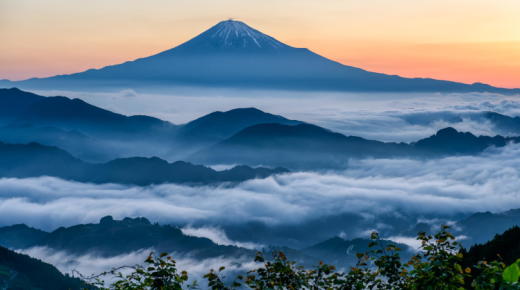
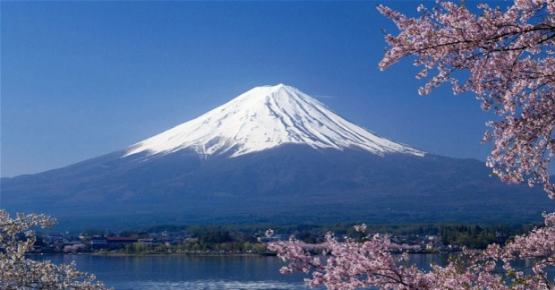

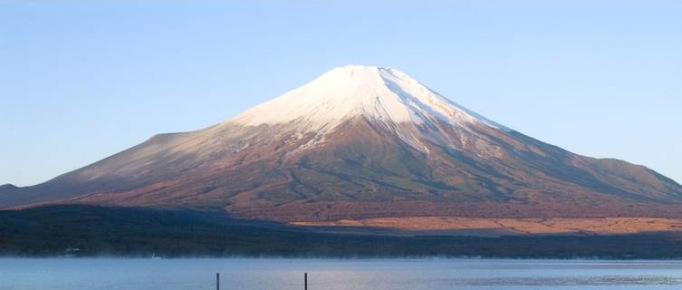
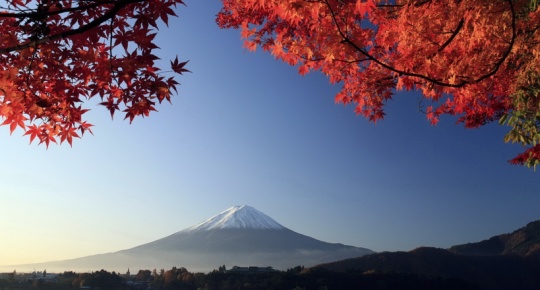
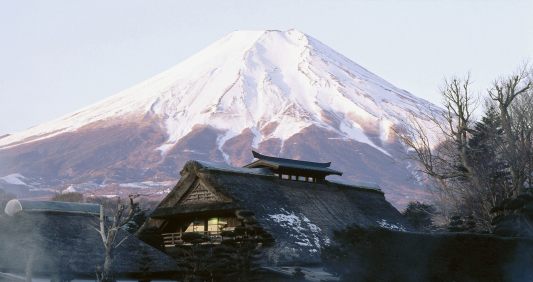
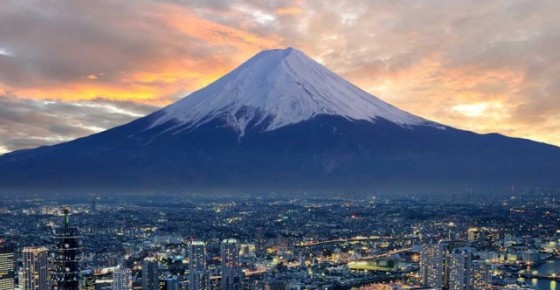




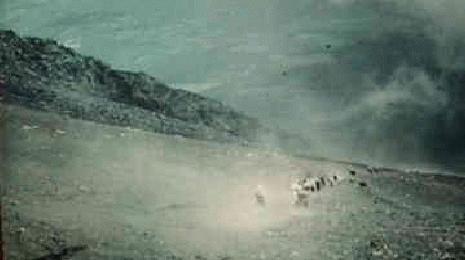

 ~NEXT~
~NEXT~

